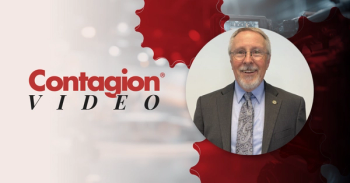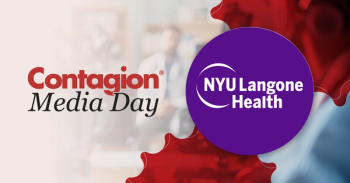
Is the US Ready for More Cases of Antibiotic Resistant Bacteria?
Jason C. Gallagher, Pharm.D., FCCP, FIDSA, BCPS, President, Society of Infectious Diseases Pharmacists, in light of the recent antibiotic resistant superbug, shares if we are ready for more cases.
Jason C. Gallagher, Pharm.D., FCCP, FIDSA, BCPS, President, Society of Infectious Diseases Pharmacists, in light of the recent antibiotic resistant superbug, shares if we are ready for more cases.
Interview Transcript (slightly modified for readability)
“Attention is finally being focused on [colistin-resistant pathogens], and as much as cases like [the Pennsylvania one] are sometimes exaggerated in the media, I like that they get press, and that people are thinking about [antibiotic-resistant bacteria], which isn’t normally something that comes to mind. I don’t think that we’re very well prepared [for these pathogens], and I think what we’re missing the most [is] surveillance systems to detect truly resistant bacteria like this.
The common antibiotics that are given for infections like this will [not normally] be tested by most laboratories. Something like colistin is usually only tested when [a healthcare provider sees] resistance to other bacteria, and only by request; [therefore] it’s unlikely that it will be detected just routinely by most laboratories in the United States, unless people are looking for it. Surveillance is the most important thing.
Probably one of the most important areas to look is actually in our food supply and to do surveillance of the antibiotic-resistant bacteria that are in animals, due to antibiotics in animal-feed.
What we need to do in order to prepare for outbreaks of antibiotic-resistant bacteria is twofold, one in the short term and one in the long term. In the short term, increase [of] surveillance is essential. We need to know what we’re dealing with, how frequently it’s there, in what areas [it’s being detected] and what are the risk factors for certain types of bacteria. By far, the biggest risk factor is antibiotic use.
It doesn’t matter, in a lot of ways, which antibiotics we talk about, overall, antibiotic use is a significant risk factor for resistance. When you think about it, antibiotics are unique in that they’re the only class of drugs that their use in one person affects their utility in another.
On the other hand, we also need to increase antibiotic development because, when we lose colistin- which is not a very good drug, it’s not one you would want to receive, it’s very toxic, it causes nephrotoxicity, or kidney damage, in a significant portion of people- but when we lose that, there’s very little, if anything, behind it, and we need to incentivize antibiotic research and development, since many pharmaceutical companies have moved away from it because the treatment of an infection for 5 or 10 days with an antibiotic is not profitable, relative to the treatment of [for example] a chronic condition, [which will take] years at a time, or the treatment of cancer, where we will treat with drugs that cost thousands and thousands of dollars.
What prescribers can do to avoid encouraging antibiotic-resistant bacteria is to limit the use of antimicrobials to patients who most essentially need them. I’m not saying do not give them to patients who are truly sick, but there’s a lot of over-prescribing for many different types of infections. There’s [also] a large number of people who are not truly infected but receive a prescription anyway, particularly for upper respiratory tract infections, [where it’s] very difficult to tell the difference between a viral infection and a bacterial infection. Interestingly, with this case, there [is] also a large number of people with bacteria in their urine who don’t have infection, particularly patients in hospitals and nursing homes. Large proportions of those patients receive antibiotics as well. Every antibiotic use increases the potential to select for a resistant infection.”
Newsletter
Stay ahead of emerging infectious disease threats with expert insights and breaking research. Subscribe now to get updates delivered straight to your inbox.





















































































































































































































































































